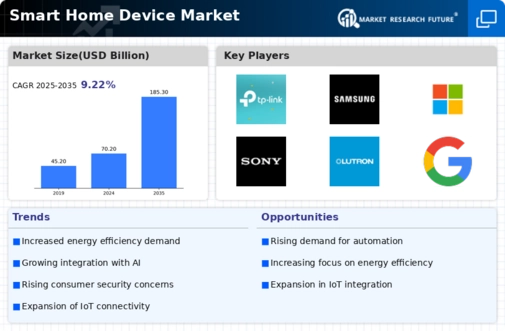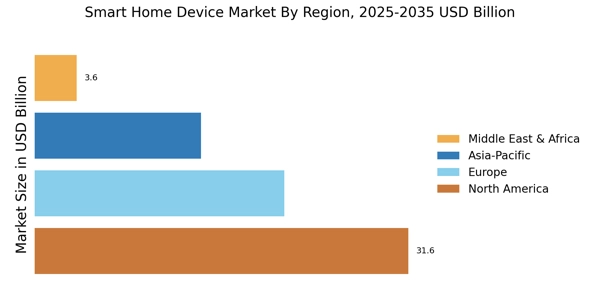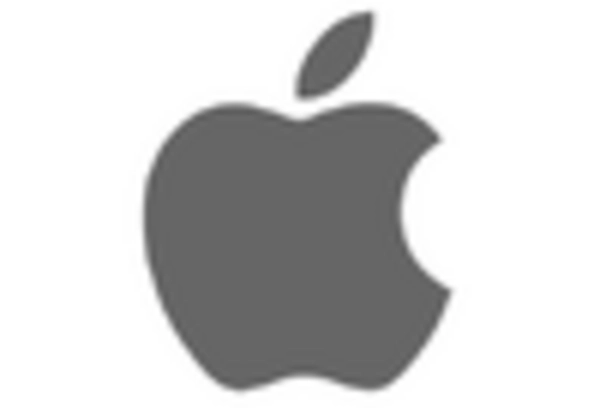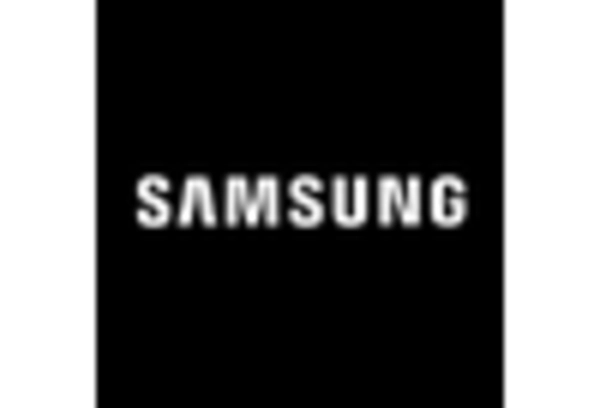Advancements in IoT Technology
The Smart Home Device Market is significantly influenced by advancements in Internet of Things (IoT) technology. The proliferation of connected devices facilitates enhanced communication and interoperability among smart home products. As of 2025, it is estimated that there will be over 75 billion connected IoT devices worldwide, creating a robust ecosystem for smart home solutions. This interconnectedness allows for improved functionality, such as real-time monitoring and control, which appeals to tech-savvy consumers. Consequently, the Smart Home Device Market is likely to witness accelerated growth as manufacturers leverage IoT advancements to create innovative and integrated solutions.
Increased Focus on Home Security
The Smart Home Device Market is significantly impacted by an increased focus on home security solutions. With rising concerns about safety, consumers are actively seeking smart security devices, such as cameras, alarms, and smart locks. The market for smart security systems is projected to reach approximately 30 billion dollars by 2026, reflecting a robust demand for enhanced safety measures. These devices not only provide real-time monitoring but also offer remote access and control, appealing to homeowners who prioritize security. This heightened emphasis on safety is likely to drive innovation and growth within the Smart Home Device Market, as manufacturers develop more advanced and reliable security solutions.
Integration of Smart Home Ecosystems
The Smart Home Device Market is witnessing a trend towards the integration of various smart home ecosystems. Consumers increasingly prefer solutions that allow for seamless interaction between different devices, enhancing overall functionality. Major tech companies are investing in platforms that unify smart home devices, enabling users to control lighting, security, and entertainment systems from a single interface. This integration is expected to foster user engagement and satisfaction, as it simplifies the management of multiple devices. As a result, the Smart Home Device Market is likely to expand as more consumers seek cohesive and interconnected smart home experiences.
Growing Awareness of Energy Efficiency
The Smart Home Device Market is increasingly shaped by a growing awareness of energy efficiency among consumers. As environmental concerns rise, individuals are more inclined to invest in smart devices that promote energy conservation. The market for smart thermostats, for instance, is projected to grow significantly, with estimates suggesting a value of over 4 billion dollars by 2027. These devices not only reduce energy consumption but also provide users with insights into their energy usage patterns. This heightened focus on sustainability drives demand for smart home technologies that align with eco-friendly practices, thereby propelling the Smart Home Device Market forward.
Rising Consumer Demand for Convenience
The Smart Home Device Market experiences a notable surge in consumer demand for convenience-driven solutions. As lifestyles become increasingly hectic, individuals seek technologies that simplify daily tasks. This trend is evidenced by the growing adoption of smart appliances, which are projected to reach a market value of approximately 100 billion dollars by 2026. Consumers are drawn to devices that offer remote control capabilities, automation, and seamless integration with existing home systems. This demand for convenience not only enhances user experience but also drives innovation within the Smart Home Device Market, prompting manufacturers to develop more intuitive and user-friendly products.

















Leave a Comment